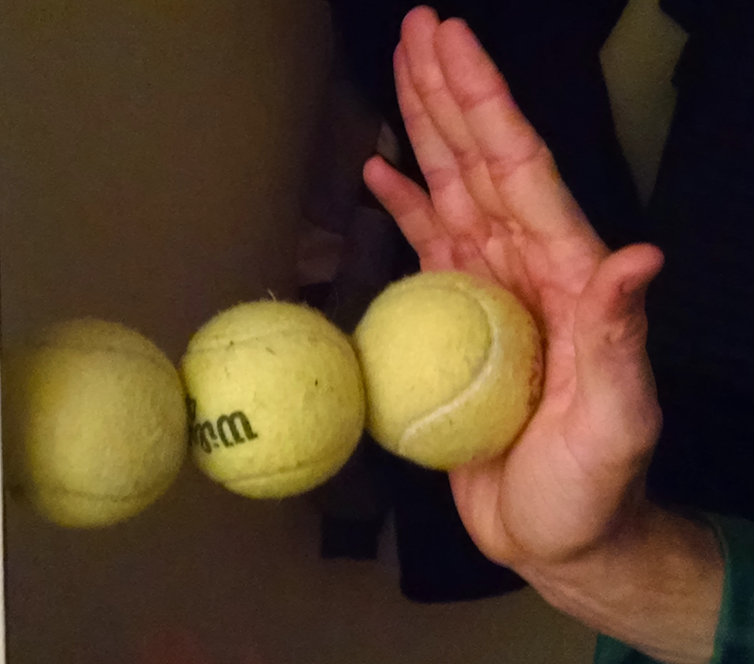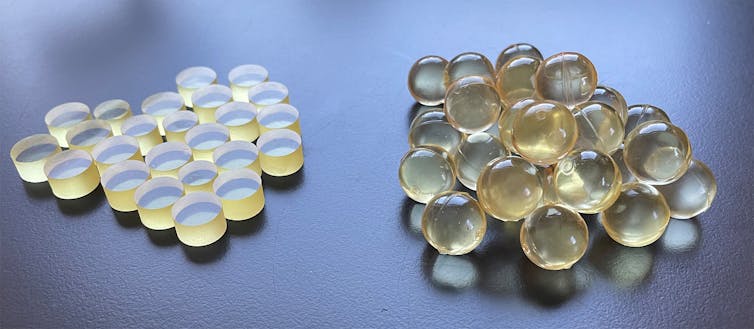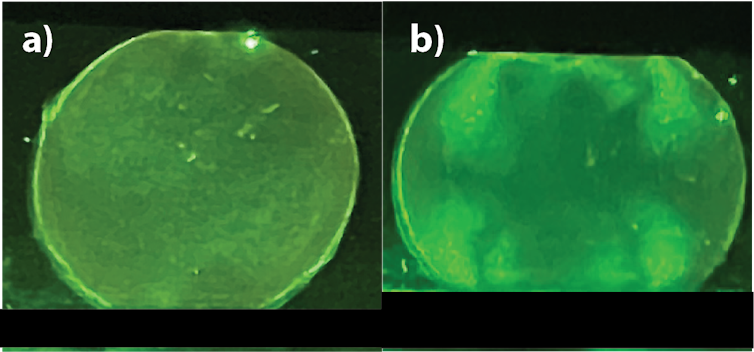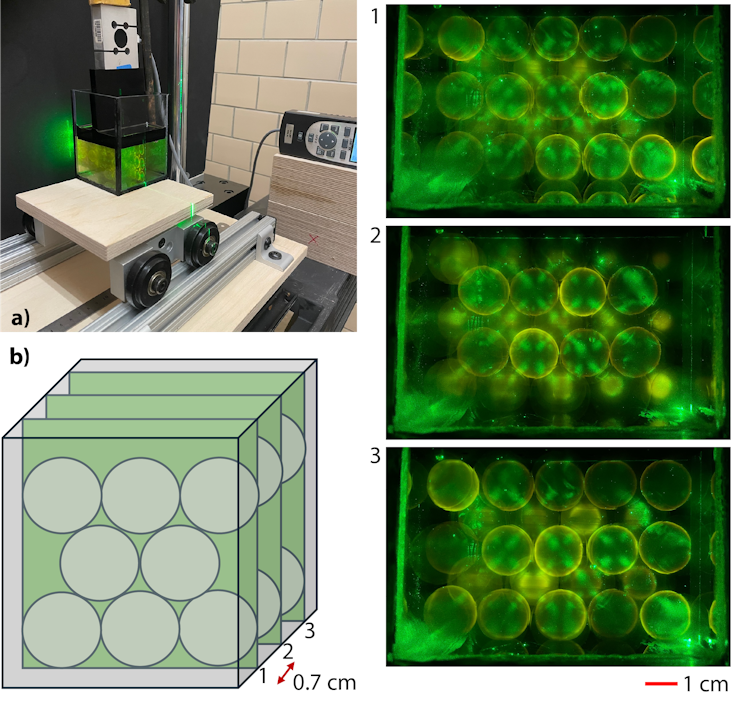Granular systems, such as sandpiles or rockslides, are all around you − new research will help scientists describe how they work
- Scientists have long struggled to understand how granular systems, such as sandpiles or rockslides, behave when individual grains interact with each other.
- A new research approach uses photoelasticity, a property that makes transparent materials visible under certain conditions, to visualize the forces between individual grains in granular systems.
- Researchers have developed a method to see the forces in three-dimensional granular systems by illuminating individual slices of the heap with a laser light sheet and reconstructing the 3D system from multiple slices.
- The experimental approach has been successful so far, allowing scientists to study the force distribution between 107 grains in a cube-shaped box, but plans are underway to expand the setup to include more grains and explore how the force changes when the granular system is agitated.
- Understanding granular systems is crucial for various applications, including agricultural and industrial processes, as well as geologic hazard assessments, such as predicting rockslides or landslides.

Did you eat cereal this morning? Or have you walked on a gravel path? Maybe you had a headache and had to take a pill? If you answered any of these questions with a yes, you interacted with a granular system today.
Scientists classify any collection of small, hard particles – such as puffed rice, sand grains or pills – as a granular system.
Even though everyone has interacted with these kinds of systems, describing the physics of how the particles collectively act when they are close together is surprisingly hard.
Granular systems sometimes move like a fluid. Think of an hourglass where sand, a very typical granular material, flows from one half of the glass to the other. But if you’ve run on a beach, you know that sand can also act like a solid. You can move over it without sinking through the sand.
As a geologist, I’m interested in understanding when a granular system flows and when it has strength and behaves like a solid. This line of research is very important for many agricultural and industrial applications, such as moving corn kernels or pills in a pipeline or shoot.
Understanding when a granular system might flow is also essential for geologic hazard assessments. For example, geologists would like to know whether the various boulders making up the slope of a mountain are stable or whether they will move as a rockslide.
Transferring forces between grains
To understand the behavior of a granular system, scientists can zoom in and look at the interactions between individual grains. When two particles are in contact with each other, they can transfer forces between each other.
Imagine this scenario: You have three tennis balls – the grains in this experiment. You place the tennis balls in a row and squeeze the three balls between your hand and a wall, so that your hand presses against the first ball. The last ball is in contact with a wall, but the middle ball is free floating and touches only the other two balls.

Jeremy Randolph-Flagg
By pushing against the first ball, you have successfully transferred the force from your hand through the row of three tennis balls onto the wall, even though you’ve touched only the first ball.
Now imagine you have many grains, like in a pile of sand, and all the sand grains are in contact with some neighboring grains. Grains that touch transfer forces between each other. How the forces are distributed in this granular system dictates whether the system is stable and unmoving or if it will move – such as a rockslide or the sand in an hourglass.

Nathan Coon
Tracking forces in the lab
This is where my research team comes in. Together with my students, I study how grains interact with each other in the laboratory.
In our experiments, we can visualize the forces between individual grains in a granular system. While all granular systems have these forces present, we cannot see their distribution because force is invisible in most grains, such as sand or pills. We can see the forces only in some transparent materials.
To make the forces visible, we made grains using a material that is transparent and has a special property called photoelasticity. When photoelastic materials are illuminated and experience force, they split light into two rays that travel at different speeds.
This property forms bright, colorful bands in the otherwise transparent material that make the force visible. The brightness of the grains depends on how much force a grain is experiencing, so we can see how the forces are distributed in the granular system. The particles themselves do not emit light, but they change how fast light rays travel through them when they experience force – which makes them appear brighter.

Jacqueline Reber
Scientists before us have used photoelasticity to visualize force in granular materials. These previous experiments, however, have examined only a single layer of grains. We developed a method to see the forces in not just a single layer of grains but throughout a whole heap.
Observing the forces on the outside of the heap of grains is pretty easy, but seeing how the forces are distributed in the middle of the pile is a lot harder. To see into the middle of the granular system and to illuminate grains there, we used a laser light sheet.
To generate a laser light sheet, we manipulated a laser beam so that the light spread out into a very narrow sheet.
With this light sheet, we illuminated one slice throughout the granular system. On this illuminated slice, we could see which grains were transferring forces, similarly to the previous two-dimensional experiments, without having to worry about the third dimension.
We then collected information from many slices across different parts of the grain heap. We used the information from the individual slices to reconstruct the three-dimensional granular system.
This technique is similar to how doctors reconstruct three-dimensional shapes of the brain and other organs from the two-dimensional images obtained by a medical CT scanner.

Nathan Coon
In our current experiments, we’ve been using only a small number of grains – 107. This way we can keep track of every individual grain and test whether this method works to see the force distribution in three dimensions. These 107 grains fill a cube-shaped box that is about 4 inches (10 centimeters) wide, tall and deep.
So far, the experimental method is working well, and we’ve been able to see how the force is distributed between the 107 grains. Next, we plan to expand the experimental setup to include more grains and explore how the force changes when we agitate the granular system – for example, by bumping it.
This new experimental approach opens the door for many more experiments that will help us to better understand granular systems. These systems are all around you, and while they seem so simple, researchers still don’t truly understand how they behave.
![]()
Jacqueline Reber receives funding from the Iowa State University College of Liberal Arts and Sciences Frontier Science Fund.
